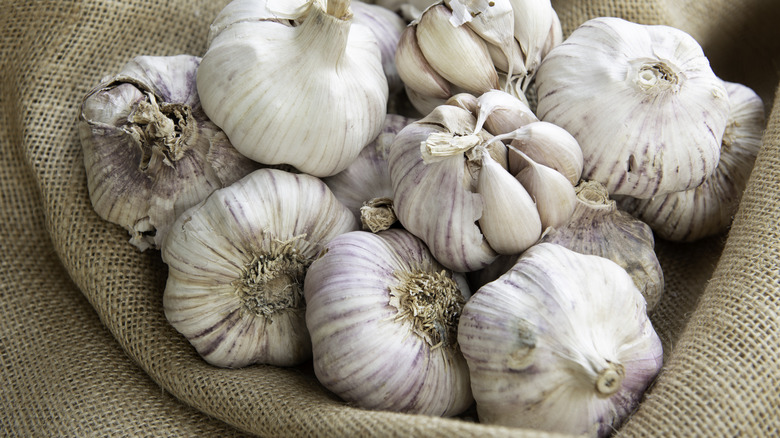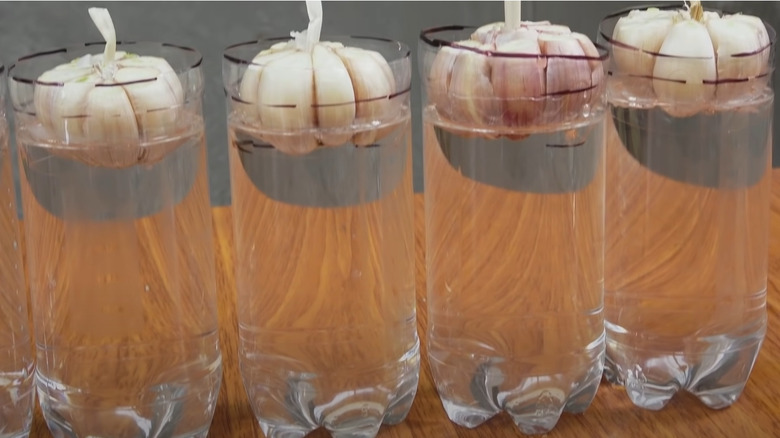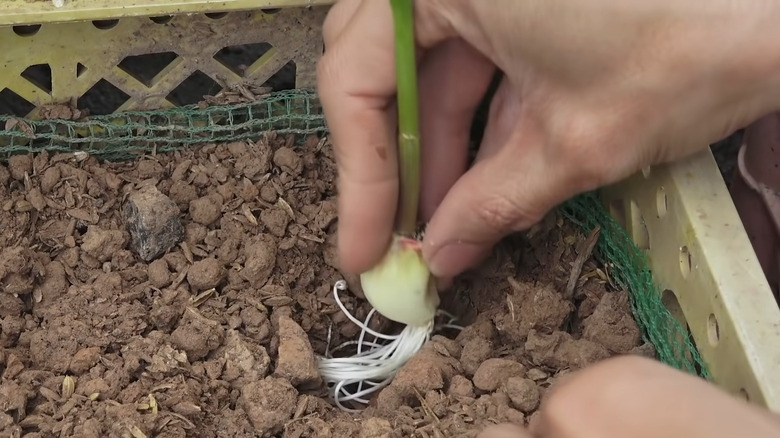Save Your Plastic Water Bottle To Grow An Endless Supply Of Garlic
Don't you just love the aroma of minced garlic in your stir fry? Wouldn't it be nice to have an endless supply of it? After all, garlic is a kitchen essential renowned for its aromatic flavor and health benefits, and is a staple in households around the world. Imagine the convenience of having a perpetual supply of fresh garlic at your fingertips. Well, the good news is that this doesn't need to be a fantasy. You can easily achieve this by growing garlic in repurposed plastic water bottles before transplanting them into the soil.
Yes, growing garlic in those empty water bottles that would otherwise end up in the garbage bin is a great, eco-friendly way to jumpstart the growth of healthy roots prior to planting. Here, we'll explore this simple yet effective method of cultivating garlic. By doing so, you can ensure a steady supply of this versatile herb without exerting too much effort. So, let's dive into the fascinating world of garlic cultivation and discover the secrets of growing it with the help of some common household items.
Rooting garlic in water
To embark on your garlic-growing journey, start by collecting empty or used plastic water bottles. Cut the bottles at the point where the tapered section ends (aka the shoulder) and the body begins. Insert the shoulder section into the body in an upside-down position, creating makeshift containers for rooting your garlic. Fill the bottles with just enough water to slightly submerge the lower end of the garlic bulbs.
Peel the bulb, making sure to retain only the innermost peel or clove skin. Also, make sure to keep the short stalk intact. Using a sanitized cutter, slice off a small part of the upper section of each garlic clove. Do this carefully so that it remains attached to the rest of the bulb. Once done, place the individual garlic bulbs, with the stalk pointing up, in each bottle.
This method serves as a prelude to planting garlic in soil, allowing the cloves to develop robust roots in a matter of days. Alternatives to water bottles include glass jars or cups, maintaining the principle of submerging the lower portion of the bulbs or garlic cloves. After a few days, you should notice sturdy roots emerging from the cloves. Next, remove the rooted bulbs from the water and gently separate the cloves with their own roots, ready for soil planting.
Just a quick note: To ensure proper rooting, change the water regularly to prevent stagnation and the potential development of harmful microbes.
Planting and caring for garlic
Once you're done with the rooting process, you can now transplant the rooted garlic cloves into well-draining soil. According to the Garlic Store, it's best to choose a loose, loamy soil enriched with organic matter. Ensure each clove is planted about three inches deep and spaced six inches apart. Garlic prefers full sunlight, so select a sunny spot in your garden for a thriving crop.
Water your garlic plants consistently, ensuring the soil is moist but never waterlogged. Mulch around the plants to retain moisture and suppress weeds. Fertilize sparingly, as garlic requires minimal feeding. Keep a watchful eye for pests, particularly downy mildew and nematodes, which can harm garlic. Introduce beneficial insects like ladybugs to control pest populations naturally. If you want bigger garlic bulbs, make sure you cut growing garlic scapes (and cook them, yum!). This way, the plant nutrients will go to the bulbs, and you can have a hearty harvest.
By following these steps and tips, you'll soon enjoy the fruits (or bulbs) of your labor, reveling in the satisfaction of repurposing plastic and cultivating your own perpetual garlic supply. Happy gardening!


